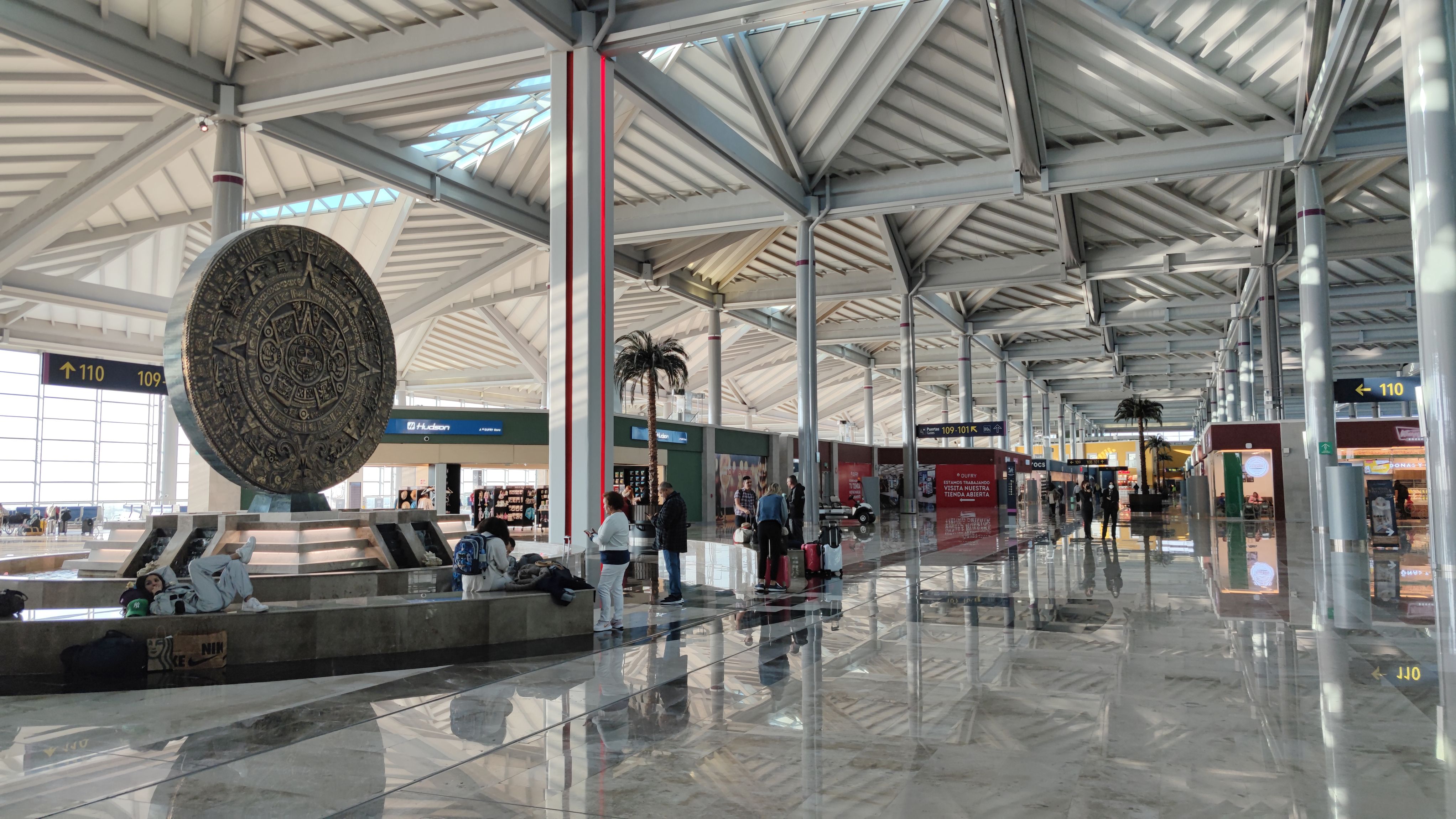Today, Mexico City’s newest Felipe Ángeles International Airport (NLU) turns one year old. The airport was built instead of the now-scrapped Texcoco International and was promoted as a low-cost option to help the saturation of the city’s airspace. But how has the rollout been and has it delivered the results it promised?
The first year of results
When Mexico’s current president, Andrés Manuel López Obrador, took office, he vowed to cancel the construction of what he called a ‘pharaonic’ airport, far too expensive and filled with corruption to be saved. He was talking about the Texcoco International Airport, a hub supposed to take over Mexico City Benito Juárez International (MEX). At its maximum, Texcoco could have received 125 million yearly passengers through two terminal buildings, 190 gates, and 85 remote positions.
Instead, President López Obrador proposed the remodeling of a military base – the military base of Santa Lucía – turning it into a commercial airport that would work simultaneously with MEX and Toluca International (TLC). At their maximum, these three airports will supposedly take on the 125 million yearly passengers promised in Texcoco.
Nonetheless, Felipe Ángeles International received only over one million passengers in its first year of operations alone, half of what was initially expected. According to El Financiero, NLU had around 14,500 operations in one year. MEX has over 14,500 operations in only 12 days.
As of March 2023, Felipe Ángeles International only has six passenger airlines. These are Aeromexico, Arajet, Conviasa, Copa Airlines, Viva Aerobus, and Volaris. The airport has 18 routes, 15 domestic and three international, of which none goes to the United States, Mexico’s largest commercial partner. Nevertheless, that’s set to change shortly as Aeromexico will inaugurate a new service to Houston in May.
A review of Mexico’s new airport
I had the opportunity to fly from NLU twice last year. I flew on March 24, three days after it was inaugurated, to Tijuana International onboard Volaris, and then I flew in December onboard Arajet to Santo Domingo in the Dominican Republic.
For me, getting to the airport was only possible via car. The new hub still lacks ground connectivity via public transportation, although that is being addressed at the moment. Both times, it took about 40 to 45 minutes to get to NLU from Mexico City, which is not bad considering it could take over two hours to get there in rush peak hours.
Find the latest South American aviation news here.
The airport check-in, security, and screening processes were swift on both flights, mainly because of the low number of daily passengers. Nonetheless, I was grateful because it allowed me to walk around the new airport.
From a passenger experience point of view, I believe the Felipe Ángeles is an upgrade compared to Mexico City International. That’s a controversial statement, but the new airport is far bigger, less crowded, better lit, and offers a cleaner experience than MEX. Almost all of these advantages are available because of the low traffic levels; we should see how the airport fares as it has an increased number of operations.
NLU has its downside, obviously. The airport does not have enough connectivity, mainly in the international segment. It offers flights to only four international destinations (Caracas, Havana, Panama City, and Santo Domingo), with Houston coming up next. The government has failed to attract new international airlines, particularly from the United States. While Mexico remains downgraded to Category 2 status by the Federal Aviation Organization, the Felipe Ángeles will unlikely reach its full potential.
Have you been to Mexico City’s Felipe Ángeles International? How did you find the experience? Let us know in the comments below.
Source: El Financiero, Expansión.

